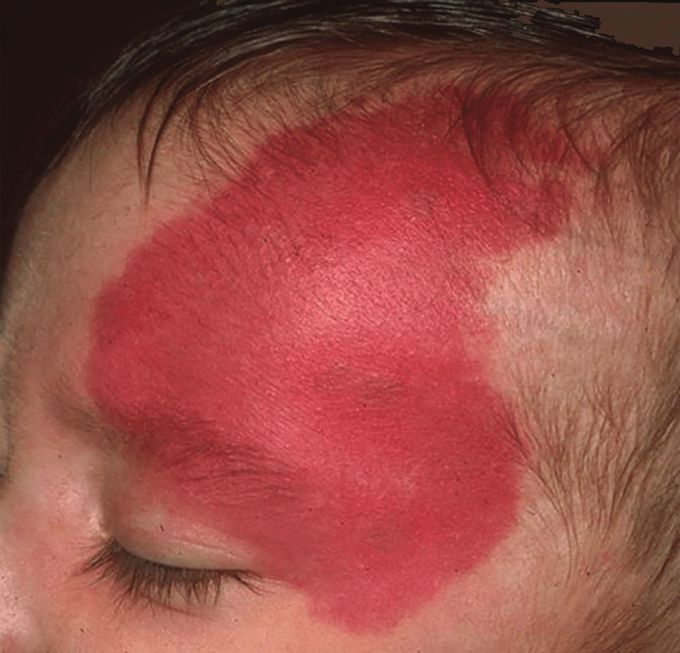


Nevus flammeus
A port-wine stain (nevus flammeus), also commonly called a firemark, is a discoloration of the human skin caused by a vascular anomaly (a capillary malformation in the skin).They are so named for their coloration, which is similar in color to port wine, a fortified red wine from Portugal. Capillary malformations are characterized by ectatic papillary dermal capillaries and postcapillary venules in the upper reticular dermis, with some evidence of increased vessel density and no apparent proliferation of vessels. The potent endothelial cell mitogen vascular endothelial growth factor (VEGF)–A and its most active receptor VEGF-R2 expression are significantly increased in capillary malformation skin tissue compared with control skin. According to at least one survey, capillary malformations are more common in whites than in African Americans. Development of lobulated capillary hemangiomas (pyogenic granulomas) within capillary malformations often results in bleeding. The destruction of these lesions usually results in minor scarring of the skin.

